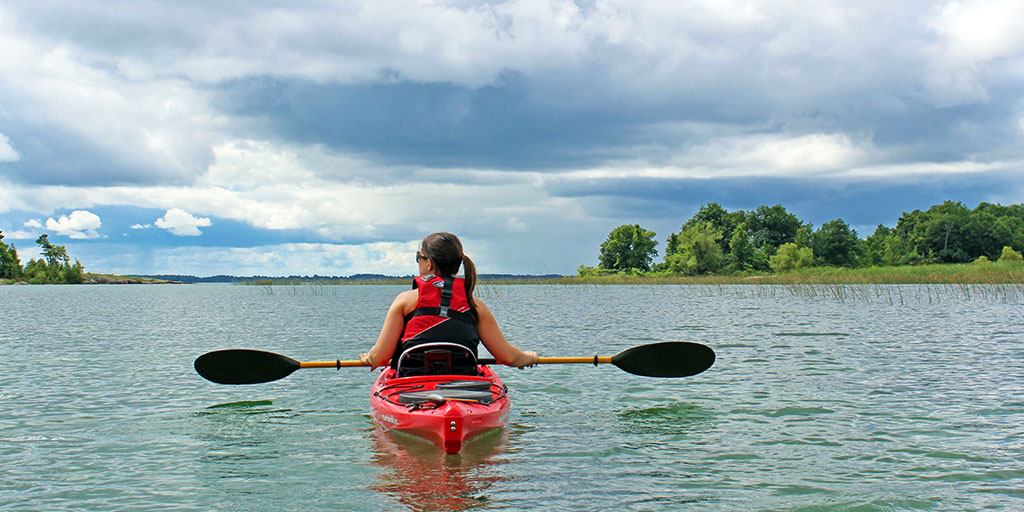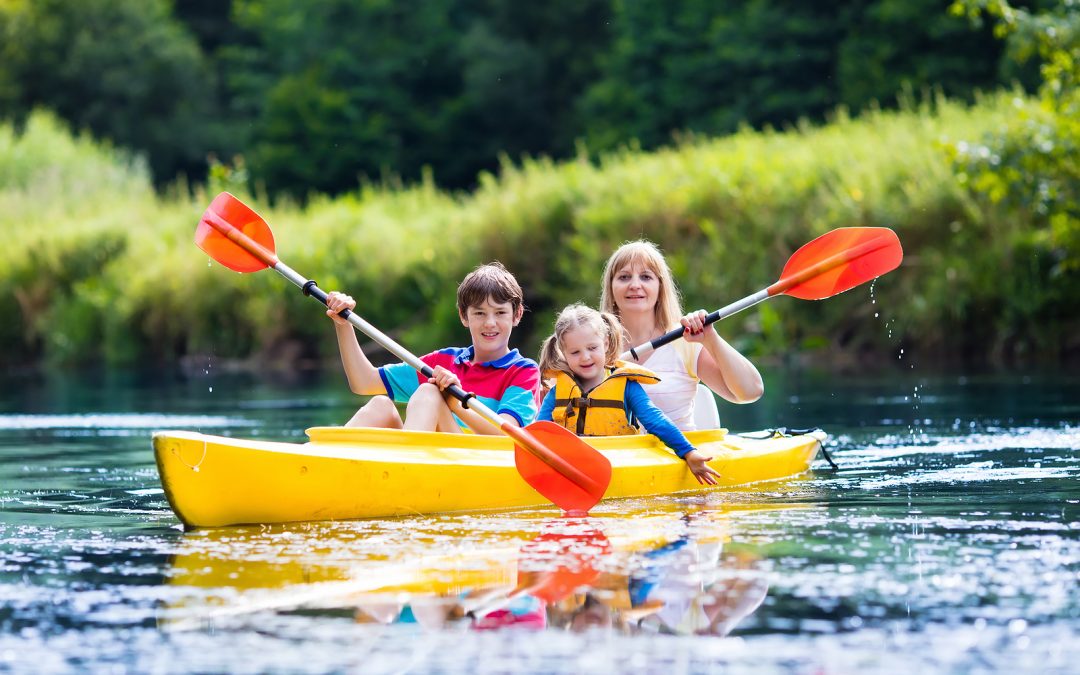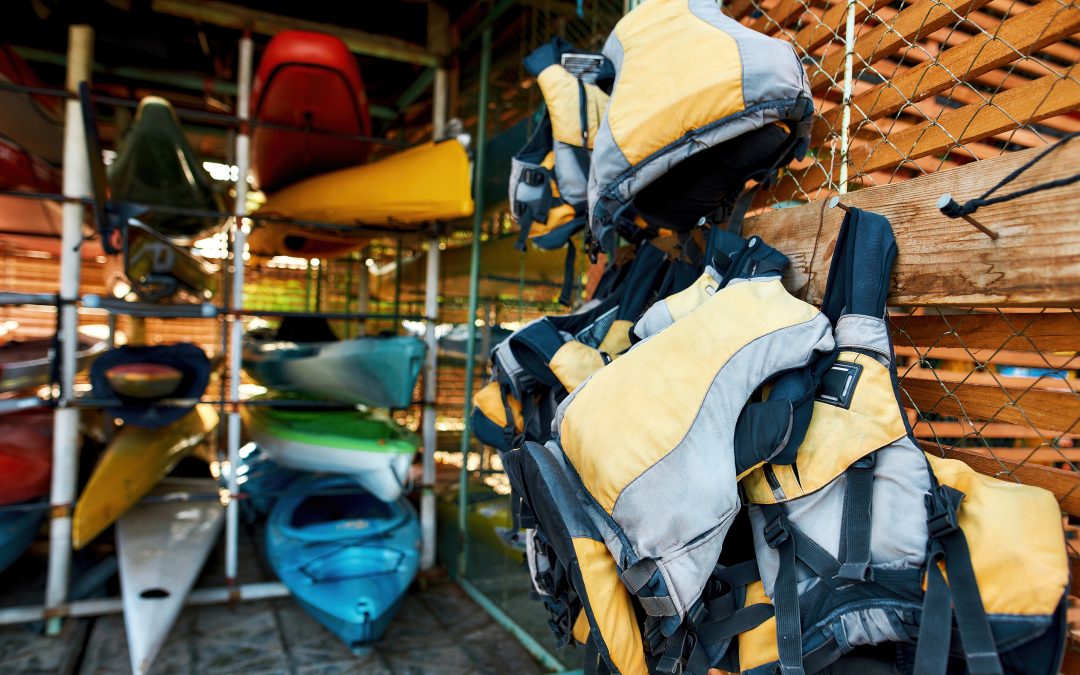Selecting the best kayaking paddle is crucial for your paddling experience, as it directly impacts your efficiency, comfort, and overall enjoyment of the water. Here’s a comprehensive guide to help you choose the right kayaking paddle:
1. Paddle Type:
• Touring/Sea Kayaking: These paddles are longer with larger blades for efficiency and stability during long-distance trips.
• Recreational: Smaller blades and lighter construction suit these for casual paddling in calm waters.
• Whitewater: Shorter paddles with robust construction and symmetrical blades for maneuverability and quick strokes.
2. Paddle Length:
• The right length depends on your height, kayak width, and paddling style.
• Taller paddlers or wider kayaks generally require longer paddles.
• Sit-on-top kayaks often require longer paddles due to the elevated seating position.
• As a starting point, use your height and kayak width to determine paddle length using manufacturer guidelines.
3. Paddle Materials:
• Aluminum: Durable and cost-effective but heavier.
• Fiberglass: Offers a balance of weight and performance.
• Carbon Fiber: Lightweight and high-performance, but more expensive.
• Plastic: Common for recreational paddles; they’re affordable and durable.
4. Blade Shape:
• Low-Angle Blades: Suited for relaxed and efficient touring strokes.
• High-Angle Blades: Ideal for aggressive and powerful strokes, commonly used in whitewater and rough conditions.
5. Blade Size:
• Larger blades offer more power but can cause fatigue over long distances.
• Smaller blades are better for recreational paddling and reduce stress on joints.
6. Shaft Design:
• Straight Shaft: Standard design, suitable for most paddlers.
• Bent Shaft: Offers ergonomic benefits and reduces strain on wrists and arms.
7. Feathering:
• Feathering is the angle between the two blades of the paddle.
• Adjustable feathering is preferred for versatility and comfort.
• Some paddles offer a one-piece shaft with fixed feathering.
8. Grips and Shaft Diameter:
• Choose a grip that feels comfortable in your hands.
• Standard shaft diameters are around 1.1-1.3 inches; smaller diameters can reduce hand fatigue.
9. Budget:
• Set a budget and find a paddle that meets your requirements within that range.
• Remember that a higher-priced paddle often comes with better materials and performance.
10. Try Before You Buy:
• Whenever possible, try out different paddles to find the most comfortable and efficient for your paddling style.
11. Brand and Reviews:
• Research reputable brands are known for quality and durability.
• Read reviews from other kayakers to gather insights into real-world performance.
12. Maintenance:
• Rinse your paddle with fresh water after each use, mainly if used in saltwater.
• Store your paddle in a cool, dry place away from direct sunlight.
Remember that the “best” paddle is the one that suits your personal preferences, paddling style, and the type of kayaking you plan to do. Take your time to research and test different paddles to find the perfect match for your needs.
Understanding Kayaking Paddles
Understanding the components of a kayaking paddle is essential for choosing the right one and maximizing your paddling experience. Here’s a breakdown of the key components of a kayaking paddle:
1. Blade:
• The blade is the flat, comprehensive portion at the end of the paddle that interacts with the water.
• Blades come in various shapes and sizes, each designed for specific paddling styles and conditions.
• Blade size affects power, efficiency, and the effort required for each stroke.
2. Shaft:
• The shaft is the long, cylindrical part of the paddle that you hold onto while paddling.
• It can be straight or bent, and its diameter can vary.
• The shaft’s material affects weight, stiffness, and overall performance.
3. Grip:
• The grip is the paddle area where you hold it with your hands.
• It can have different shapes, textures, and angles to accommodate various paddling styles and hand positions.
4. Ferrule:
• The ferrule is the adjustable joint that connects the two halves of a two-piece paddle.
• It allows you to adjust the feathering angle (the angle between the two blades) to suit your preference.
5. Feathering Angle:
• Feathering refers to the offset angle between the two blades of a paddle.
• Adjustable feathering allows you to align the blades in different positions, which can reduce wind resistance and wrist strain.
6. Drip Rings:
• Drip rings are small plastic rings placed on the shaft to prevent water from running down the shaft and onto your hands.
7. Materials:
• Paddle materials include aluminum, fiberglass, carbon fiber, and plastic.
• Each material has its characteristics, affecting factors such as weight, stiffness, durability, and cost.
8. Paddle Length:
• Paddle length is determined by factors such as your height, kayak width, and paddling style.
• A longer paddle provides more power but requires more effort, while a shorter paddle is easier to maneuver.
9. Paddle Angle:
• Paddle angle refers to the angle at which the blade enters the water during a stroke.
• The angle can vary based on your paddling style and the type of kayak you’re using.
10. Paddle Style:
• There are various paddle styles, including touring, recreational, whitewater, and performance paddles.
• Each style has distinct features designed to optimize performance in specific conditions.
11. Maintenance:
• Regular maintenance, such as rinsing your paddle after use and storing it correctly, can extend its lifespan.
• Inspect your paddle for any signs of damage or wear, especially at connection points like the ferrule.
Remember that choosing the right paddle is not just about the technical aspects but also about your personal comfort, paddling style, and the type of kayaking you plan to do. Trying out different paddles and seeking advice from experienced kayakers can help you make an informed decision.
Assessing Your Kayaking Paddles
Assessing your kayaking paddle is essential to ensure it’s in good condition and suitable for your needs. Regular maintenance and evaluation can help you avoid water issues and prolong your paddle’s life. Here’s how to assess your kayaking paddle:
Visual Inspection:
Look for cracks, dents, or any visible damage on the blade, shaft, and grip.
Check the ferrule for any signs of wear or looseness.
Examine the drip rings for cracks or damage.
Blade Integrity:
Ensure the blades are securely attached to the shaft and there’s no wobbling or movement.
Check for any warping or deformation of the blade shape, as this can affect performance.
Shaft Condition:
Inspect the shaft for any bends, dents, or kinks that might affect its strength and stiffness.
If you have a two-piece paddle, examine the ferrule for signs of wear, corrosion, or difficulty in adjusting.
Grip Comfort:
Assess the grip for any signs of wear or damage, especially in areas where your hands make contact.
Ensure the grip feels comfortable and secure in your hands.
Feathering Adjustment:
If your paddle has an adjustable feathering angle, check if the mechanism works smoothly and holds the chosen angle securely.
Paddle Weight and Balance:
Assess the weight of the paddle. Heavier paddles can lead to fatigue over long paddling sessions.
Hold the paddle at its midpoint and see if it balances horizontally. This can indicate the overall balance of the paddle.
Drip Rings:
Check if the drip rings are intact and in the correct position to prevent water from running down the shaft.
Maintenance:
Rinse your paddle with fresh water after each use, especially if you’ve been paddling in saltwater.
Store your paddle in a cool, dry place away from direct sunlight.
Functionality Test:
Take your paddle for a test paddle to see if it performs as expected. Pay attention to any unusual vibrations, sounds, or handling issues.
Consider Changing Needs:
You might need a different paddle as your paddling style and preferences evolve. Assess if your current paddle still meets your needs.
Seek Professional Help:
If you’re unsure about assessing your paddle’s condition or if you suspect any damage, consider taking it to a paddling shop or a professional for inspection.
Replace When Necessary:
If your paddle shows signs of wear, damage, or no longer meeting your needs, it might be time to invest in a new one.
Regular assessment and maintenance of your kayaking paddle can help you catch potential issues early and ensure a safe and enjoyable paddling experience. Remember that a well-maintained paddle enhances your performance on the water and contributes to your overall comfort.
Selecting the Right Kayaking Paddles
Selecting the right kayaking paddle involves considering various factors to ensure it suits your paddling style, body type, and preferences. Here’s a step-by-step guide to help you make the right choice:
1. Determine Your Paddling Style:
Consider the type of kayaking you’ll be doing: touring, recreational, whitewater, etc.
Different paddle styles are designed for specific activities and conditions.
2. Calculate Paddle Length:
Measure your height and the width of your kayak.
Use manufacturer guidelines or online calculators to determine the appropriate paddle length.
Taller paddlers or wider kayaks generally require longer paddles.
3. Choose Blade Shape and Size:
Low-angle blades are ideal for relaxed touring and long-distance paddling.
High-angle blades suit more aggressive and assertive paddling styles.
Larger blades offer more power, while smaller edges reduce fatigue over long paddling sessions.
4. Select Shaft Material and Shape:
Consider the weight and stiffness of the shaft material (e.g., fiberglass, carbon fiber).
Decide between a straight shaft or a bent shaft for ergonomic benefits.
5. Consider Feathering:
Adjustable feathering lets you set the angle between the blades based on your comfort and wind conditions.
Choose a paddle with adjustable feathering if you’re looking for versatility.
6. Evaluate Grip Comfort and Shape:
Grip comfort is crucial for preventing hand fatigue.
Test different grip shapes and materials to find what feels most comfortable for you.
7. Assess Weight and Balance:
Opt for a lightweight paddle for extended paddling sessions.
Hold the paddle at its midpoint to check for balance.
8. Budget Considerations:
Set a budget and look for paddles within that range.
Remember that higher-priced paddles often come with better materials and performance.
9. Read Reviews and Seek Recommendations:
Research reputable brands and read reviews from other kayakers.
Ask experienced paddlers for recommendations based on your needs.
10. Test Before Buying:
Whenever possible, test different paddles before making a purchase.
Many kayak rental shops allow you to test various paddles to find the one that suits you best.
11. Consider Future Needs:
Consider your potential growth as a kayaker and how your paddling needs might change over time.
Investing in a paddle that can accommodate various paddling styles can be beneficial.
12. Quality and Warranty:
Look for paddles from trusted manufacturers with good reputations.
Check for warranty information in case of any defects or issues.
13. Personal Preference:
Ultimately, the right paddle is the one that feels comfortable and efficient for you.
Take into account personal preferences such as aesthetics and brand loyalty.
Remember that selecting a kayaking paddle is a personalized process. Balancing your budget, performance requirements, and personal comfort is essential. Take your time to research, try out different options, and seek advice from experienced kayakers before making your decision.
Benefits of Choosing the Right Kayaking Paddle
Choosing the right kayaking paddle offers several benefits that enhance your overall paddling experience and performance on the water. Here are some critical advantages of selecting the appropriate paddle:
Improved Efficiency and Performance:
The right paddle size, blade shape, and material allow for efficient strokes, reducing fatigue and increasing speed and maneuverability.
Reduced Fatigue and Discomfort:
A properly sized paddle with the right blade size reduces strain on your arms, shoulders, and wrists, allowing you to paddle longer without getting tired.
Enhanced Control and Maneuverability:
A paddle suited to your paddling style and conditions provides better control over your kayak, especially during turns, edging, and navigating obstacles.
Optimal Power Transfer:
Paddles with suitable blade shapes transfer power from your body to the water more effectively, translating into more robust and efficient strokes.
Less Risk of Injury:
Using a paddle that fits your body and technique reduces the risk of overuse injuries, strains, and discomfort.
Comfortable Paddling Experience:
The right grip shape, shaft material, and feathering angle provide a comfortable and enjoyable paddling experience.
Customized Feathering Angle:
Adjustable feathering angles allow you to adapt the paddle to wind conditions and your comfort, leading to smoother strokes and less strain.
Adaptability to Conditions:
Different blade sizes and shapes suit various water conditions, ensuring you’re prepared for calm lakes, fast-moving rivers, or ocean waves.
Efficient Tracking and Directional Control:
Well-designed paddles help maintain a straight course and make course corrections more efficient.
Longevity and Durability:
A paddle that matches your paddling style and technique will experience less stress, resulting in better long-term durability.
Increased Confidence:
Using the right paddle that suits your skill level and comfort boosts your confidence on the water, allowing you to focus on enjoying your paddling adventures.
Optimal Energy Conservation:
A paddle that maximizes your energy transfer to the water allows you to cover longer distances with less effort.
Versatility and Adaptation:
Some paddles are designed for multiple paddling styles, making them versatile choices as your skills and interests evolve.
Better Learning Experience:
Beginners benefit from using paddles appropriate for their skill level, as it promotes proper technique and a more positive learning curve.
Value for Money:
Investing in the right paddle tailored to your needs and preferences ensures you’re getting the most value for your money in terms of performance and satisfaction.
Ultimately, the right kayaking paddle optimizes your performance, minimizes discomfort, and maximizes the joy of being out on the water. It’s an essential piece of equipment that can significantly impact your paddling journey.











